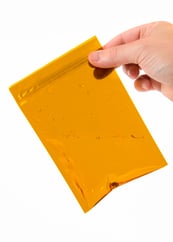Does Your Medical or Research Application Require Enhanced Temperature Resistant Materials?
FEP and Kapton® films have long been the trusted materials for use in the medical and biopharmaceutical fields because of their ability to withstand extreme temperature applications. Our 100% FEP Duralok™ technology now adds portable, resealable, efficient, and effective enclosure convenience to FEP’s property of being resistant to enhanced temperatures.
 Why Switch to FEP Duralok™ Technology
Why Switch to FEP Duralok™ Technology
Perhaps you’ve been using the standard protocol of either a clamp made of some other material, or have invested in expensive heat-sealing equipment that requires time, training, and resources to operate. Both options create an extra step in your process, add additional cost, are inconvenient to use, and can present a rash of problems especially when you’re involved in processes that take place in high-performance environments such as cryopreservation, autoclaving, tissue storage, and stem cell incubation.
There is a solution that mitigates these challenges and offers a durable and secure liquid and airtight enclosure for critical or caustic sample bags (though not rated for pressure): resealable FEP Duralok™ technology.
 High-Performance Environments
High-Performance Environments
- Cryopreservation - FEP Duralok™ bags are approved to the operating temperatures of cryogenic storage–as low as -400°F. For instance, if you were to place a heart vessel in a normal FEP bag, you would normally have to heat-seal it. This added step widens the window during which the organ could get contaminated or infected. With our resealable Duralok™ bags, you can immediately close the bag and heat-seal it at a later stage if required. This greatly reduces the risk of contamination.
Contact us to request a free Duralok™ bag sample to see how well it works with your cryopreservation techniques.
- Autoclaving - Sterilization autoclaves are commonly found in medical settings such as hospitals and laboratories that need to ensure the sterility of different instruments and objects. Equipment is typically subjected to a high-pressure saturated steam at 284°F. Most plastics are not able to withstand such high temperatures but FEP can. The resealable property of FEP Duralok™ bags makes it easy to safely secure smaller instruments before putting them inside an autoclave. Duralok™ bags can also be re-used depending on the specifications of your process.
- Stem Cell Incubation - While stem cell incubation does not entail extremely high temperatures, it does involve dealing with elevated temperatures. FEP not only withstands these temperatures but it also has the unique ability to permeate oxygen, which allows your stem cell sample to grow at a faster rate compared to other plastics.
Even though it is common industry practice to use open petri dishes in incubators, it is crucial to contain variables such as contamination. In the event of one petri dish getting contaminated, the entire batch could be compromised if the contamination spreads to other petri dishes. Placing each culture in an individual Duralok™ bag can easily contain the contamination, saving you a lot of time and resources.
We’re excited to offer the first and only resealable Duralok™ bag to you for your high-temperature applications. We think you’ll be, too. Contact us to find out how Duralok™ can help solve your storage issues in the lab or field.
Duralok™ is now available in our online store.
